Famous Personalities
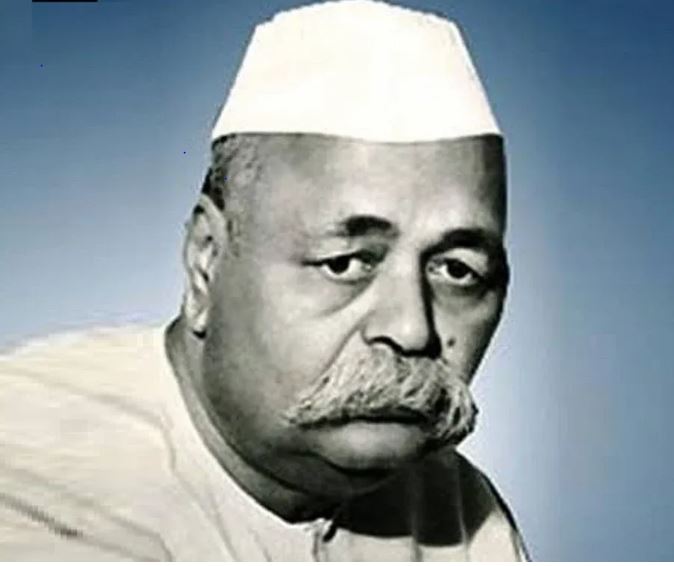
Uttarakhand has nurtured a diverse array of talent that has left an indelible mark on the annals of history. In this comprehensive exploration, we delve into the lives, contributions, and legacies of the famous personalities who have emerged from the heartland of Uttarakhand, celebrating their achievements and honoring their enduring impact on society. Govind Ballabh Pant: Govind Ballabh Pant, born on September 10, 1887, in the town of Khoont in present-day Uttarakhand, was a prominent Indian freedom fighter, statesman, and one of the architects of modern India. His contributions to the Indian independence movement and subsequent role in nation-building have earned him a revered place in the annals of Indian history.
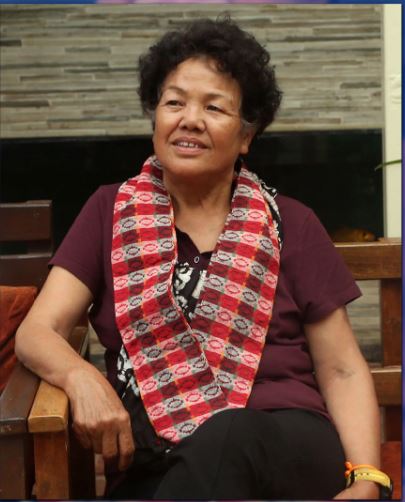
Early Life and Education: Pant hailed from a humble background, born into a family of farmers in the Kumaon region of Uttarakhand. Despite facing financial constraints, he pursued his education with determination, completing his schooling in Almora and later obtaining a Bachelor's degree in Law from Allahabad University. Role in the Freedom Struggle: Inspired by the ideals of Mahatma Gandhi and the Indian National Congress, Pant plunged into the freedom struggle, dedicating himself to the cause of India's independence from British colonial rule. He played a pivotal role in organizing protests, boycotts, and civil disobedience movements across Uttar Pradesh, mobilizing the masses against British tyranny and exploitation. Pant's leadership during the Civil Disobedience Movement and his defiance of British laws earned him the admiration and respect of his peers and followers. He was imprisoned several times for his anti-colonial activities, enduring hardship and persecution with unwavering courage and fortitude. Post-Independence Contributions: Following India's independence in 1947, Pant emerged as one of the key figures in the newly formed government, serving in various capacities at both the state and national levels. He played a crucial role in drafting the Indian Constitution and shaping the country's legal framework, advocating for social justice, equality, and democratic governance. As the Chief Minister of Uttar Pradesh from 1950 to 1954, Pant implemented progressive policies aimed at promoting education, healthcare, and rural development, laying the foundation for the state's socio-economic progress. He was later appointed as the Union Home Minister in the central government, where he spearheaded initiatives to strengthen national security, uphold the rule of law, and safeguard the rights and liberties of all citizens. Legacy: Govind Ballabh Pant's contributions to the Indian freedom struggle and his dedicated service to the nation have left an indelible mark on the collective consciousness of the Indian people. His unwavering commitment to the ideals of democracy, secularism, and social justice continues to inspire successive generations of leaders and citizens to strive for a better, more inclusive India. In honor of his legacy, several institutions and landmarks across India bear his name, including the prestigious Govind Ballabh Pant Institute of Engineering and Technology in Pauri Garhwal, Uttarakhand, which serves as a testament to his enduring influence and lasting impact on the nation. 2. Bachendri Pal: Bachendri Pal is a distinguished mountaineer from Uttarakhand, best known for being the first Indian woman to reach the summit of Mount Everest. Born on May 24, 1954, in the small village of Nakuri in the Uttarkashi district of Uttarakhand, Pal's achievements have made her a celebrated figure in the field of mountaineering and an inspiration to women across India. Early Life and Education: Bachendri Pal was born into a modest family in the Himalayan foothills. Her father, Kishan Singh Pal, was a border tradesman who ferried goods across the Tibetan border. Growing up in the rugged terrain of the Himalayas, Pal developed a love for the mountains at an early age. She was an adventurous child and excelled in academics and sports. Pal completed her early education in Nakuri and then pursued higher studies at D.A.V. Post Graduate College in Dehradun, where she earned a degree in Sanskrit. She later obtained a Bachelor's degree in Education and a Master’s degree in Physical Education. Mountaineering Career: Early Climbing Experience: Pal's mountaineering career began with her training at the Nehru Institute of Mountaineering (NIM) in Uttarkashi. She showed exceptional skills and determination during her training, which laid the foundation for her future achievements. Ascent of Mount Everest: In 1984, Pal was selected as a member of India's first mixed-gender team to attempt an expedition to Mount Everest, led by Brigadier D.K. Khullar. Despite facing harsh weather conditions and a near-death experience when an avalanche struck their camp, Pal persevered. On May 23, 1984, a day before her 30th birthday, she reached the summit of Mount Everest, becoming the first Indian woman to achieve this feat. Her accomplishment was a monumental milestone in Indian mountaineering history and brought her national and international acclaim. Later Expeditions and Achievements: Following her historic climb, Bachendri Pal continued to pursue her passion for mountaineering. She led several successful expeditions, including: 1:- The Indo-Nepalese Women’s Everest Expedition (1993): This was the first all-women expedition to Mount Everest, led by Pal, which further established her as a pioneering figure in women's mountaineering. 2:- The Great Indian Women’s Rafting Voyage (1994): An expedition covering 2,500 kilometers from Haridwar to Kolkata by rafting down the Ganges River, aimed at spreading the message of environmental conservation. 3:- The First Indian Women's Trans-Himalayan Expedition (1997): A 4,000-kilometer trek from Arunachal Pradesh to the Siachen Glacier, which was one of the longest and most challenging expeditions undertaken by Indian women. Awards and Honors: Bachendri Pal’s contributions to mountaineering and her role as a trailblazer for women in adventure sports have earned her numerous accolades, including: 1:- Padma Shri (1984): India’s fourth-highest civilian award. 2:- Arjuna Award (1986): For her outstanding achievement in sports. 3:- National Adventure Award (1994): By the Government of India, for her contributions to adventure sports. 4:- Tenzing Norgay National Adventure Award (1994): The highest national recognition for outstanding achievements in the field of adventure. Personal Life and Legacy: Bachendri Pal’s journey from a small village in Uttarakhand to the summit of the world's highest peak has made her a role model for many. She has dedicated much of her life to promoting adventure sports and empowering women through education and training. Pal has been involved with the Tata Steel Adventure Foundation (TSAF) since 1984, where she has played a significant role in encouraging young people to take up adventure sports and leadership training. Her work at TSAF has helped many aspiring mountaineers and adventurers achieve their dreams. Bachendri Pal's life and achievements exemplify courage, determination, and a pioneering spirit. Her contributions to mountaineering and her efforts to promote adventure sports have left an indelible mark on the field. Through her inspiring journey and relentless pursuit of excellence, Bachendri Pal continues to inspire generations of adventurers and serves as a beacon of empowerment for women across India and beyond.
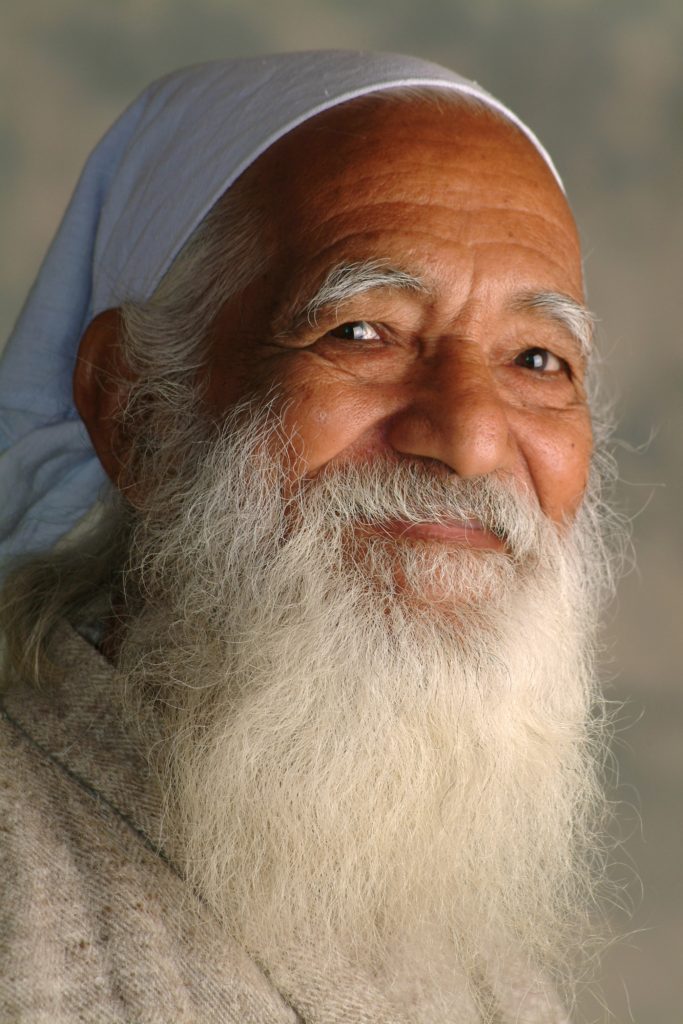
3. Sunderlal Bahuguna: Sunderlal Bahuguna was an iconic environmentalist and social activist from Uttarakhand, widely recognized for his pioneering efforts in forest conservation and sustainable development. Born on January 9, 1927, in the village of Maroda in Tehri Garhwal, Bahuguna dedicated his life to the protection of the Himalayan forests and the rights of the indigenous people. Early Life and Education: Sunderlal Bahuguna was born into a modest family and grew up amidst the lush forests and rivers of the Garhwal region. His early experiences with nature profoundly influenced his later activism. He pursued his education in various local schools, but his true education came from the environmental and social issues he observed around him. Activism and Contributions: A. Chipko Movement: Bahuguna is best known for his role in the Chipko Movement, a grassroots environmental campaign that began in the 1970s in the Garhwal Himalayas. The movement, primarily led by rural villagers, involved hugging trees to prevent them from being felled by contractors. The name "Chipko" comes from the Hindi word "chipko," meaning "to hug" or "to cling." Bahuguna's leadership and eloquence brought national and international attention to the movement. He traveled extensively, spreading awareness about the importance of forest conservation and the need to protect the fragile Himalayan ecosystem. His efforts helped secure a 15-year ban on commercial logging in the region, preserving vast tracts of forest land. B. Anti-Tehri Dam Campaign: Another significant campaign led by Bahuguna was his opposition to the Tehri Dam project. He argued that the dam would displace thousands of people, submerge forests, and pose a severe ecological threat to the region. Despite facing considerable opposition, Bahuguna's persistent efforts highlighted the environmental and social costs of large-scale dam projects. Advocacy for Sustainable Development: Bahuguna was a strong advocate for sustainable development and the rights of indigenous communities. He promoted the idea of "simple living and high thinking" and emphasized the need for environmentally sustainable practices. His philosophy was deeply rooted in Gandhian principles of non-violence and self-sufficiency. Awards and Recognition: Sunderlal Bahuguna's contributions were widely recognized, and he received numerous awards and honors throughout his life. Some of the notable awards include: - Padma Vibhushan (2009): India's second-highest civilian award, recognizing his exceptional and distinguished service. - Padma Shri (1981): Awarded for his contributions to environmental conservation. - Jamnalal Bajaj Award (1986): For promoting Gandhian values outside Maharashtra. - Right Livelihood Award (1987): Often referred to as the "Alternative Nobel Prize," for his work in environmental conservation. Personal Life: Sunderlal Bahuguna was married to Vimla Bahuguna, who was also an active participant in the Chipko Movement and other social causes. Together, they formed a powerful team, dedicated to environmental and social activism. Their home in the village of Silyara became a hub for environmentalists and social workers from around the world. Death and Legacy: Sunderlal Bahuguna passed away on May 21, 2021, due to complications related to COVID-19. His death was widely mourned, and he was remembered as a visionary who dedicated his life to the cause of environmental conservation and social justice. Bahuguna's legacy continues to inspire environmentalists and activists globally. His life's work serves as a testament to the power of grassroots movements and the importance of protecting our natural resources for future generations. Through his relentless efforts and unwavering commitment, Sunderlal Bahuguna ensured that the voice of the environment and the marginalized people of the Himalayas were heard loud and clear.
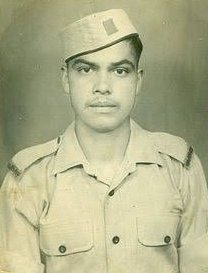
4. Gabar Singh Negi: Gabar Singh Negi, born on November 21, 1895, in the village of Manjaur in present-day Uttarakhand, was a valiant soldier and recipient of the Victoria Cross, the highest military decoration for valor in the British Empire. His heroic actions during the First World War earned him widespread acclaim and recognition for his extraordinary bravery and selfless sacrifice. Military Career: Gabar Singh Negi enlisted in the 2nd Battalion of the Garhwal Rifles, then a part of the British Indian Army, at the outbreak of the First World War in 1914. Serving on the Western Front in France, Negi displayed exceptional courage and leadership under fire, earning the admiration and respect of his comrades and superiors. Victoria Cross Action: On March 10, 1915, during the Battle of Neuve Chapelle, Negi's battalion came under heavy enemy fire while advancing towards the enemy trenches. Despite being wounded multiple times, Negi continued to press forward, leading his men with dauntless resolve and inspiring them to overcome seemingly insurmountable odds. In a display of extraordinary valor, Negi single-handedly charged an enemy machine gun position, killing several enemy soldiers and capturing the gun before succumbing to his wounds. His selfless act of bravery and his unwavering devotion to duty earned him the Victoria Cross, making him the first and only Indian soldier of the Garhwal Rifles to receive this prestigious award during the First World War. Legacy: Gabar Singh Negi's indomitable spirit, courage, and sacrifice continue to inspire generations of soldiers and civilians alike, serving as a shining example of the highest ideals of military service and selflessness. His name is commemorated in various memorials and monuments across India, including the Gabar Singh Negi Memorial Institute of Technology in Pauri Garhwal, Uttarakhand, which stands as a tribute to his gallantry and valor on the battlefield. Negi's legacy serves as a reminder of the extraordinary contributions and sacrifices made by the brave men and women of Uttarakhand in defense of their nation and the values of freedom, democracy, and justice for which they fought and gave their lives. It is difficult to mention name of each and every personalities of Uttarakhand however there are some names who are give their contribution in Uttarakhand and India. 5. Mohan Chand Sharma: Born on 23rd September 1965, Mohan Chand Sharma was an officer in the Indian Police who was awarded the Gallantry Medal Ashoka Chakra Award in 2009 after his death. He was born in Chaukhutia-Maasi in Uttarakhand. Sharma joined the Delhi Police and served with distinction for 19 years, earning a reputation as a dedicated and fearless officer. Sharma's career in the Delhi Police was marked by numerous successes and accolades. His commitment to duty and exceptional bravery were evident in the many high-risk operations he led. As an encounter specialist, he played a crucial role in combating organized crime and terrorism in the capital. His expertise and courage made him one of the most respected officers in the force. One of the most significant and tragic events in Sharma's career was the encounter at Baatla House in Jamia Nagar, Delhi, on 19th September 2008. The operation was conducted to apprehend members of the Indian Mujahideen, a terrorist group responsible for a series of bomb blasts in Delhi. Sharma, leading his team, displayed exceptional valour as they confronted the terrorists. Despite being heavily outnumbered and facing fierce resistance, Sharma continued to press forward. During the encounter, Sharma sustained severe gunshot wounds. Despite his critical injuries, he continued to lead his team and ensured the operation's success. His actions led to the elimination of two terrorists and the arrest of another, significantly crippling the terrorist group's operations. However, the injuries he sustained were grievous, and he succumbed to them later in the hospital. Mohan Chand Sharma's sacrifice did not go unnoticed. In recognition of his extraordinary bravery and dedication to duty, he was posthumously awarded the Ashoka Chakra, India's highest peacetime gallantry award, in 2009. This honor underscored the nation's gratitude for his service and sacrifice. Sharma's legacy continues to inspire countless police officers and citizens across India. His life and career are a testament to the unwavering commitment and bravery of those who serve in the police force, often putting their lives on the line to ensure the safety and security of others. Mohan Chand Sharma's name is etched in the annals of Indian police history as a symbol of heroism and dedication. 6. Narendra Singh Negi: Narendra Singh Negi is a celebrated folk singer, poet, and songwriter from Uttarakhand, renowned for his contributions to Garhwali and Kumaoni music. Born on August 12, 1949, in Pauri Garhwal, Uttarakhand, Negi has become an iconic figure in the region, often referred to as the "voice of the hills." Early Life and Education Narendra Singh Negi was born in a humble family in the village of Pauri. From a young age, he displayed a keen interest in music and poetry, which was nurtured by the rich cultural heritage of his surroundings. He completed his education in his hometown, where he developed a deep connection with the folk traditions and stories of the region. Career Negi's career in music began in the 1970s, and he quickly rose to prominence with his melodious voice and poignant lyrics. His songs often reflect the social, cultural, and political issues of Uttarakhand, resonating deeply with the local populace. He has released numerous albums over the decades, each contributing to his legendary status in the region. Musical Style and Themes Negi's music is characterized by its heartfelt lyrics and traditional melodies. He has a unique ability to weave stories into his songs, capturing the essence of life in the hills. His themes range from love and nature to social issues and political satire. Some of his most famous songs, such as "Tehri Dam," highlight the plight of displaced villagers due to the construction of the Tehri Dam, while others celebrate the beauty and simplicity of life in Uttarakhand. Impact and Legacy Narendra Singh Negi's impact on the culture of Uttarakhand is profound. He has been a voice for the people, using his music to address their concerns and aspirations. His songs have become anthems for various movements and causes in the state, including the Uttarakhand statehood movement. Negi has also played a crucial role in preserving and promoting Garhwali and Kumaoni music, ensuring that the younger generation remains connected to their roots. His contributions have been recognized with numerous awards and honors, both at the state and national levels. Personal Life Despite his fame, Negi remains deeply connected to his roots. He continues to live in Uttarakhand and is actively involved in the cultural life of the region. His humility and dedication to his art have endeared him to fans of all ages. Recent Work Even after decades in the industry, Narendra Singh Negi continues to create music that resonates with his audience. He remains an active performer, participating in concerts and cultural events across Uttarakhand and beyond. His recent works continue to reflect his commitment to addressing contemporary issues while celebrating the rich cultural heritage of his homeland. Narendra Singh Negi is more than just a musician; he is a cultural icon whose work has had a lasting impact on Uttarakhand. His songs are not only a source of entertainment but also a means of preserving and promoting the cultural identity of the region. Through his music, Negi has ensured that the voice of Uttarakhand continues to be heard and celebrated. 7. Jaspal Rana: Jaspal Rana, born on June 28, 1976, in the town of Tehri Garhwal in Uttarakhand, is a former Indian shooter and one of the most decorated marksmen in the history of Indian sports. Rana's journey from a small town in the Himalayas to the pinnacle of shooting success is a testament to his talent, dedication, and relentless pursuit of excellence. Inspired by his father, a former national-level shooter, Rana took up shooting at a young age, displaying exceptional skill and promise from the outset. Rana's breakthrough moment came in 1994 when he won a gold medal at the Asian Games in Hiroshima, Japan, at the age of just 17, becoming the youngest Indian shooter to achieve this feat. Over the course of his illustrious career, Rana went on to win numerous medals and accolades at the national and international levels, including multiple gold medals at the Commonwealth Games, Asian Games, and World Championships. His dominance in the sport of shooting and his remarkable achievements have earned him the admiration and respect of sports enthusiasts across the country, making him a role model and inspiration for aspiring athletes everywhere. 8. Rajendra Singh (Waterman of India): Rajendra Singh, born on August 6, 1959, in the village of Bagar in Uttarakhand's Alwar district, is an environmentalist and water conservationist who has dedicated his life to reviving traditional water harvesting techniques and conserving India's rivers, lakes, and water bodies. Singh's deep-rooted connection to the land and his profound understanding of the symbiotic relationship between humans and nature have guided his lifelong mission to restore the health and vitality of India's water resources. Singh's pioneering work in water conservation, watershed management, and community-based development has earned him the nickname "Waterman of India" and international acclaim for his efforts to address the growing water crisis facing the country. Through his organization, Tarun Bharat Sangh, Singh has mobilized communities across India to revive traditional water harvesting structures such as johads, check dams, and ponds, empowering villagers to take control of their water resources and build resilience to drought, flooding, and climate change. Singh's vision of a water-secure and sustainable future for India continues to inspire countless people to join the movement for water conservation and environmental stewardship, ensuring that his legacy will endure for generations to come.
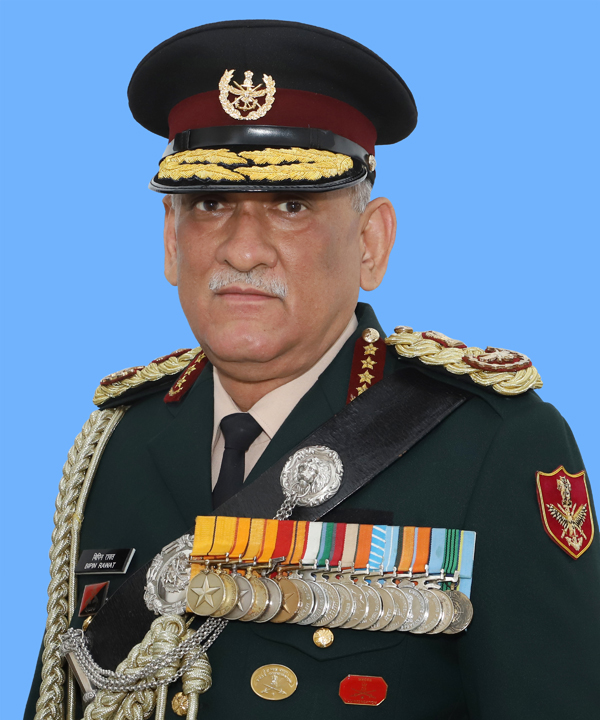
9. Bipin Rawat CDS India: General Bipin Rawat was the 27th Chief of Army Staff (COAS) of the Indian Army, serving from December 31, 2016, to December 31, 2019. After his tenure as the COAS, he was appointed as the first Chief of Defence Staff (CDS) of India on January 1, 2020. Unfortunately, he passed away in a helicopter crash on December 8, 2021, along with his wife and other military personnel. Here are some key highlights of General Bipin Rawat's career and achievements: Leadership Roles: Rawat held various important command and staff appointments throughout his career. Before becoming the COAS, he served as the Vice Chief of Army Staff, the General Officer Commanding-in-Chief of the Southern Command, and the General Officer Commanding of the Strike Corps. Combat Experience: He had extensive operational experience, having served in several key military operations and counter-insurgency campaigns, including in Jammu and Kashmir and the Northeastern region of India. Modernization Initiatives: As the COAS, Rawat emphasized the need for the modernization of the Indian Army. He focused on enhancing the army's capabilities through the induction of modern equipment and technology. Border Security: Rawat was vocal about India's security challenges, especially along the borders with Pakistan and China. He advocated for a robust defense posture and readiness to counter any threats to India's territorial integrity. Military Reforms: As the first Chief of Defence Staff, General Rawat played a crucial role in implementing military reforms aimed at improving coordination and integration among the three branches of the Indian armed forces. Strategic Vision: Rawat was known for his strategic vision and leadership qualities. He often emphasized the importance of jointness and synergy among the army, navy, and air force to enhance India's defense capabilities. Honors and Awards: Throughout his distinguished career, General Bipin Rawat was honored with several awards and decorations, including the Param Vishisht Seva Medal, the Uttam Yudh Seva Medal, the Ati Vishisht Seva Medal, and the Vishisht Seva Medal. General Bipin Rawat's tenure as the COAS and later as the CDS left a significant impact on the Indian military, shaping its modernization efforts and strategic outlook. His untimely demise was mourned by the nation, and he is remembered as a dedicated and visionary leader of the Indian armed forces. 10. Gulab Khandelwal: Gulab Khandelwal, born on April 23, 1924, in the town of Jhinjhana in Uttar Pradesh, was a renowned Hindi poet and literary figure who spent much of his life in Uttarakhand, where he made significant contributions to the promotion and preservation of Hindi literature and culture. Khandelwal's poetry, characterized by its simplicity, sincerity, and social relevance, resonated deeply with readers across India, earning him a devoted following and critical acclaim. Khandelwal's deep love for the Hindi language and his commitment to its propagation and enrichment led him to establish the Hindi Sahitya Sammelan, a literary organization dedicated to promoting Hindi literature and fostering literary exchange and dialogue among writers, poets, and intellectuals. Through his writings, lectures, and public appearances, Khandelwal championed the cause of Hindi as a language of national unity and cultural identity, inspiring generations of writers and readers to embrace their linguistic heritage and celebrate the richness and diversity of Indian literature.
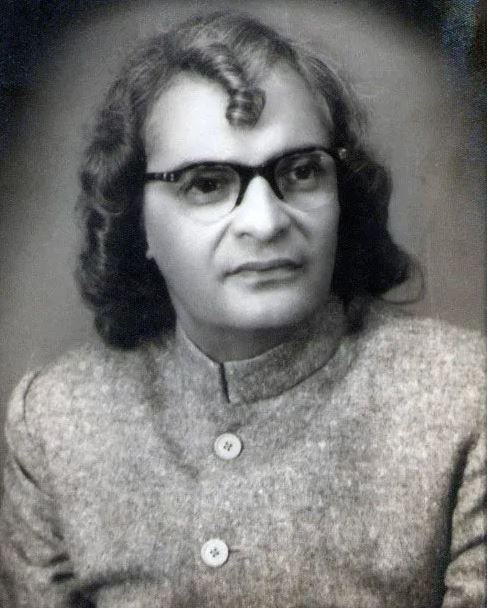
11. Sumitra Nandan Pant: Sumitra Nandan Pant, born on May 20, 1900, in the village of Kausani in Uttarakhand's Bageshwar district, is one of the most celebrated poets of modern Hindi literature. Pant's poetry, characterized by its lyrical beauty, philosophical depth, and spiritual resonance, has earned him a permanent place in the pantheon of Indian literature, cementing his legacy as a towering figure in the world of letters. Pant's deep connection to the natural beauty and spiritual essence of the Himalayas is reflected in his poetry, which explores themes of love, longing, nature, and the human condition with profound sensitivity and insight. His magnum opus, "Kala Aur Kama," is considered a landmark work in Hindi literature, showcasing Pant's mastery of language, imagery, and symbolism. Throughout his prolific career, Pant received numerous accolades and awards, including the Sahitya Akademi Award, the Padma Bhushan, and the Jnanpith Award, India's highest literary honor, in recognition of his contribution to the enrichment of Indian literature and culture. 12. Heera Singh Rana: Heera Singh Rana was a celebrated folk singer, songwriter, and poet from Uttarakhand, known for his significant contributions to Kumaoni and Garhwali music. Born on February 10, 1942, in the picturesque village of Manila Dungari, Almora district, Rana became an iconic figure in the realm of Uttarakhand's folk music. Early Life and Education Heera Singh Rana was born into a culturally rich environment, which greatly influenced his artistic inclinations. From a young age, he was captivated by the folk traditions and musical heritage of his region. He completed his early education in Almora, where he immersed himself in local folklore and music. Career Rana's musical journey began in the 1960s, and he quickly became a prominent voice in Kumaoni and Garhwali music. His songs, characterized by their heartfelt lyrics and traditional melodies, resonated deeply with the people of Uttarakhand. He released numerous albums over his career, each contributing to his legendary status. Musical Style and Themes Rana's music is known for its emotive lyrics and rich, traditional tunes. His songs often depict the beauty of the Uttarakhand landscape, the simplicity of rural life, and the socio-political issues faced by the hill people. His ability to capture the essence of Uttarakhand's culture and the struggles of its people made his music relatable and poignant. Some of his most popular songs include "Rangile Bindi Gala" and "Gorakhya Re Koi," which have become timeless classics. His music often addressed themes of migration, love, nature, and the socio-economic challenges of life in the hills. Impact and Legacy Heera Singh Rana's contributions to Uttarakhand's folk music are immense. He played a crucial role in popularizing Kumaoni and Garhwali music, not only within the state but also among the broader Indian audience. His songs have been instrumental in preserving the cultural heritage of Uttarakhand and instilling a sense of pride among its people. Rana was also actively involved in various social and cultural movements in Uttarakhand. His music often served as a voice for the people, addressing their concerns and aspirations. He received several awards and honors for his work, including the prestigious Uttarakhand Ratna Award. Personal Life Despite his fame, Heera Singh Rana remained deeply connected to his roots. He continued to live in Uttarakhand, where he was actively involved in the cultural and social life of the region. His humility and dedication to his art earned him the love and respect of his fans. Recent Work and Death Heera Singh Rana continued to create and perform music well into his later years. His recent works maintained the same depth and authenticity that characterized his earlier music. Unfortunately, Heera Singh Rana passed away on June 13, 2020, leaving behind a rich legacy of folk music and cultural contributions. Heera Singh Rana was more than just a singer; he was a cultural icon whose work had a profound impact on the people of Uttarakhand. His music not only entertained but also educated and inspired, preserving the rich cultural heritage of the region. Through his songs, Rana ensured that the voice of Uttarakhand continued to be heard and cherished for generations to come. Literature and Art: Sumitranandan Pant - Renowned Hindi poet and literary figure. Mahadevi Varma - Distinguished Hindi poet, freedom fighter, and Padma Bhushan recipient. Gaura Pant 'Maithani' - Noted Hindi poet and writer. Shivani - Renowned Hindi novelist and Padma Bhushan recipient. Rahul Sankrityayan - Eminent writer, scholar, and traveler. Harivansh Rai Bachchan - Celebrated Hindi poet and father of Bollywood actor Amitabh Bachchan. Kunwar Narayan - Prominent Hindi poet and Jnanpith Award winner. Mohan Upreti - Renowned Garhwali poet and literary figure. Music and Performing Arts: Kumauni and Garhwali Folk Artists - Various traditional musicians and performers. Malika Pukhraj - Legendary Indian classical singer from Uttarakhand. Mohan Upreti - Eminent Garhwali folk singer. Narendra Singh Negi - Popular Garhwali folk singer and composer. Heera Singh Rana - Popular Kumaoni folk singer and composer. Kailash Kher - Renowned playback singer and music composer. Anuradha Paudwal - Versatile playback singer known for her contributions to Indian film music. Sports: Shiva Keshavan - Renowned Indian luger and Winter Olympian. Anju Bobby George - Former Indian athlete and long jumper, and Arjuna Award recipient. Devendra Jhajharia - Indian para-athlete and javelin thrower, and Paralympic gold medalist. Leander Paes - Legendary Indian tennis player and multiple Grand Slam champion. Manish Pandey - Indian cricketer who hails from Nainital, Uttarakhand. Gaurav Rawat (Baba) - Renowned Indian mountaineer and Guinness World Record holder. Politics and Governance: Hemwati Nandan Bahuguna - Former Chief Minister of Uttar Pradesh and Union Minister, and freedom fighter. B.C. Khanduri - Former Chief Minister of Uttarakhand and Union Minister. Ramesh Pokhriyal 'Nishank' - Former Chief Minister of Uttarakhand, Union Minister, and current Member of Parliament. Harish Rawat - Former Chief Minister of Uttarakhand and senior Indian National Congress leader. Trivendra Singh Rawat - Former Chief Minister of Uttarakhand and Bharatiya Janata Party (BJP) leader. Satpal Maharaj - Union Minister of State for Culture and Tourism, and Member of Parliament. Social Activism: Sunderlal Bahuguna - Environmentalist and pioneer of the Chipko movement. Chandi Prasad Bhatt - Environmentalist and founder of the Dasholi Gram Swarajya Sangh. Medha Patkar - Social activist and founder of the Narmada Bachao Andolan. Vandana Shiva - Environmental activist and author, known for her work on biodiversity and sustainable agriculture. Rajendra Singh - Water conservationist and recipient of the Stockholm Water Prize. Film and Television: Tom Alter - Veteran Indian actor, writer, and Padma Shri recipient. Manoj Bajpayee - Acclaimed Bollywood actor and multiple National Film Award winner. Malvika Raaj - Indian actress known for her role as young Pooja in the movie "Kabhi Khushi Kabhie Gham". Radhika Madan - Bollywood actress known for her roles in films like "Pataakha" and "Angrezi Medium". Mohit Chauhan - Popular playback singer known for his soulful voice and hit songs in Bollywood.